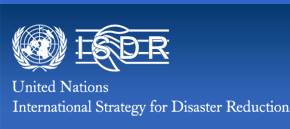The Handbook, titled "Disaster through a Different Lens,” shows that journalists can play a critical role by raising awareness about disasters and making a difference in the way people act, especially with climate change recognized as aggravating the vulnerability to disasters.
 26 May 2011: During the Third Session of the Global Platform on Disaster Risk Reduction, the UN International Strategy for Disaster Reduction (UN/ISDR) launched a media handbook, titled “Disaster through a Different Lens,” which aims to assist journalists to cover disasters in ways to persuade national and local governments to invest more in disaster risk reduction (DRR) policies.
26 May 2011: During the Third Session of the Global Platform on Disaster Risk Reduction, the UN International Strategy for Disaster Reduction (UN/ISDR) launched a media handbook, titled “Disaster through a Different Lens,” which aims to assist journalists to cover disasters in ways to persuade national and local governments to invest more in disaster risk reduction (DRR) policies.
The handbook was developed with the financial support of the European Commission’s Humanitarian Aid and Civil Protection Directorate General (ECHO). Subtitled “Behind every effect, there is a cause,” the Handbook highlights that climate change, environmental degradation, poverty and rapid urbanization contribute to expose more people to disasters, and governments are slow to implement DRR policies by continuing to react to disaster emergencies, rather than looking for ways to prevent them. The Handbook shows that journalists can play a critical role by raising awareness about disasters and making a difference in the way people act, especially with climate change recognized as aggravating the vulnerability to disasters.
The Handbook draws on examples from four major disasters: the Indian Ocean tsunami; the eruption of Mt. Pinatubo, Philippines; Hurricane Katrina, US; and the Kashmir earthquake, Pakistan. The Handbook concludes that journalists should take disasters seriously and help through appropriate coverage to prevent them. [Publication: Disaster through a Different Lens]